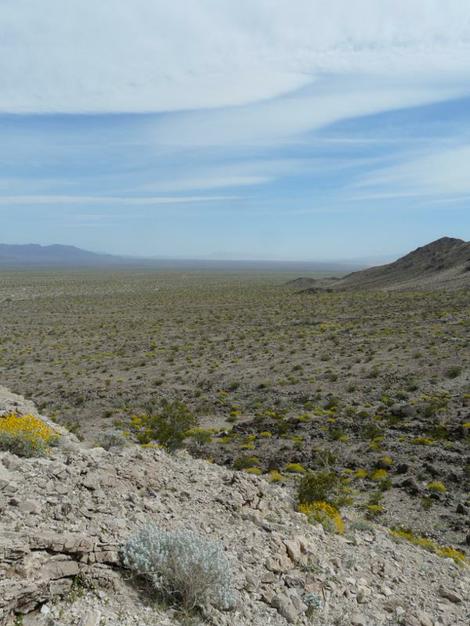California cold and native plants
If you are in a climate that is cold and you want to grow plants that you are uncertain will make it through a winter the following information should be helpful. Most of this information comes from Halfpenny & Ozanne ( Winter, an Ecological Handbook) and Sakai (Frost Survival of Plants) Both books are interesting. Sakai's book was wonderful.
Snow is no big deal in terms of cold. The temperature of snow is around freezing and snow has excellent insulating properties. It looks spectacular to have little stems sticking through snow where the nursery stock is supposed to be. But I'm relieved when we get snow along with the cold. Sakai says "If snow falls before the soil is frozen, a covering of 2 M [6 ft.] keeps the underlying ground at a temperature between 0° and -2° C.[29-32 °F]."
And "beneath a layer of snow thicker than 20cm [8in], the temperature seldom falls below -5° C [23° F.] under the winter conditions of intermediate latitudes." That is warm enough to keep many types of citrus alive.
Plants we list as being hardy to 0° F will not generally handle root temperatures below 15 °F.(-8 °C.). Most desert plants cannot handle root temperatures below 27° F (-3° C). With a few exceptions (some Oaks, Mahonias, Firs, Iris and Pines) nothing has survived root temperatures here of 2-4°F (-15° C) (in containers we get these root temperatures). France et. al. found that exposure of ectomycorrhizas to temperatures of -10° C (14° F) for 48 hours delayed fungal growth for 3 to 39+ days.
Treat the plants as unstable for the first few weeks after a bad freeze. Mulch them, but do not prune until the tissue is dry and woody, and water only if you cannot avoid it.
At your site if there is snow, how deep is it when the cold comes? If none, is there a dry winter wind? The worst case is where there is a strong dry wind with no snow. Plant plants behind rocks or in wind shadows. Sakai also found what we have found, that mulch greatly increases the soil temperature and winter survival. A 3-4" mulch can keep the soil from freezing for 15 hours. Further, even if it does freeze the effects of the frost are reduced because of the insulation (as with snow) provided by the mulch and the greater moisture reserves under the mulch. "Dry soil freezes sooner than wet soil, and bare ground sooner than covered soil."
" In coarse, dry soil, frost penetrated at a mean speed of 2 cm/day [1 in] . . . In wet humus. . . the speed of frost was only .6 cm/day and only reached [ half the depth].”
One of the biggest problems here is the frozen pot during a warm sunny day and 20 mile per hour winds. (We've been 18° F(-5° C.) at night and 95° F (35° C.) during the day more times than I'd like.) This is the problem in many steppe sites or in some mountain valleys. We fit the pattern for winter desiccation caused by warm dry winds on frozen ground. Remember ". . . winter desiccation is an important factor limiting the natural range of many broadleaf evergreen trees [and shrubs]."
If you have snow, think about its depth. In most of the higher mountains the evergreen bushes hide under this snow. You'll find that deciduous bushes are vertical and evergreen bushes are horizontal. "The parts of the shoots near the ground . . . remain, on a clear night 2-6 k [10° F.] warmer than the . . . upright parts"
If there are trees in the area make use of them. "The annual minimum soil temperatures below the forest were 6.4 to 8.4 k [12° F.] [warmer] than below bare ground." In the nursery here we observed that a squash plant growing under an open live oak structure didn't freeze until it got to 20° F(-5° C) in the open.
A rock wall properly placed so the cold air flowed past it warmed the plants at its base about 10° F (6° C). On the nursery site, the north side of the house, where the cold air flows down the mountain and settles against it is 10° F colder than the front of the house from which the cold can move away.
If these factors are combined, you can gain a full 15° F (10° C). Sometimes a spot that is USDA Zone 6a is 20 foot away from a USDA Zone 8a spot. Prognosticate before the plants are planted.






